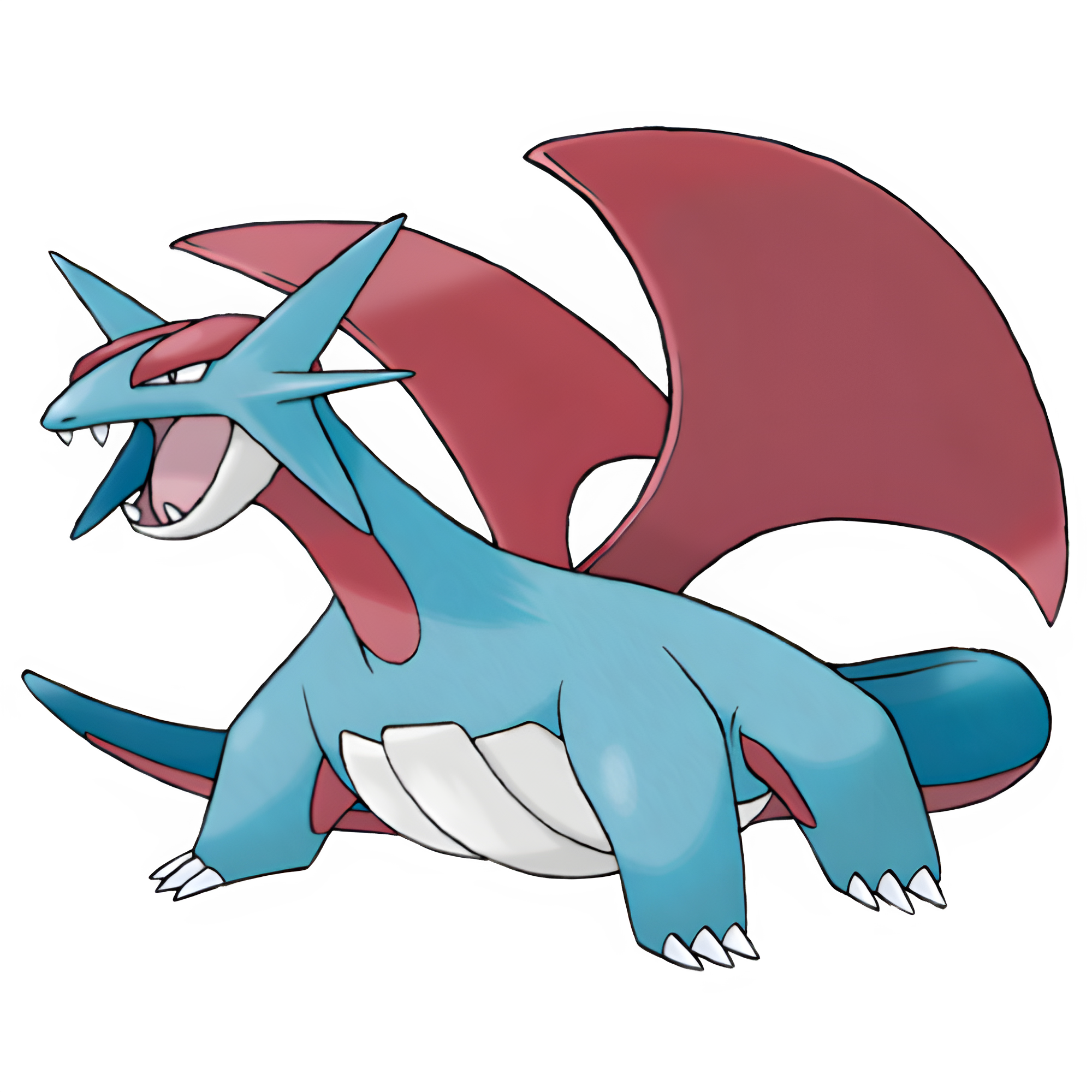Facts for Kids
Salamence is a Dragon/Flying-type Pokémon known for its impressive speed and strength, making it a formidable opponent in battle.
Overview
Cultural Impact
Competitive Play
Evolutionary Line
Type And Abilities
Trivia And Fun Facts
Biology And Appearance
Role In Pokémon Games
Habitat And Distribution

Inside this Article
Deep Blue
Addition
Universe
Culture
Pokémon
Shelgon
Speed
Claw
Did you know?
🐉 Salamence is a Dragon/Flying-type Pokémon introduced in Generation III.
💨 Salamence evolves from Shelgon starting at level 50.
⚔️ Salamence has the ability Intimidate, which lowers the opponent's Attack stat when it enters the battle.
🔥 Its Mega Evolution, Mega Salamence, gains increased stats and a new ability called Aerilate.
🌪️ Salamence is known for its impressive speed and powerful flying attacks.
💎 This Pokémon has a height of 1.5 meters (4'11") and a weight of 102.6 kg (226.0 lbs).
🌌 Salamence can learn moves like Dragon Claw, Fly, and Hyper Beam.
🌍 In Pokémon lore, Salamence resembles the mythical dragon of various cultures.
🥇 Salamence is often considered one of the strongest non-legendary Pokémon in battles.
🦅 It is known to soar through the skies at high altitudes with its powerful wings.
Introduction
Cultural Impact
It has appeared in multiple movies, TV shows, and merchandise, delighting fans all over the world. Many trainers fall in love with its powerful design and abilities. Salamence is also featured in Pokémon games alongside its evolutions, creating a lasting legacy. Fans often draw or create fan art of Salamence, showcasing its majestic beauty. It has made a name for itself as one of the iconic Dragon-type Pokémon, bringing excitement and inspiration to trainers everywhere!
Competitive Play
️ Its high Attack and Speed stats make it very effective against many opponents. Trainers often use Salamence in battle strategies, utilizing its Intimidate ability to weaken opponents. Moves like Dragon Dance can boost its Attack and Speed even more! Clever trainers create tricks using Salamence to surprise their rivals. Though it has weaknesses, its versatility makes it a top contender in battles. Salamence’s strong presence on the battlefield makes it a thrilling Pokémon to have!
Evolutionary Line
Bagon then evolves into Shelgon, which is a cocoon-like Pokémon that protects Bagon as it grows inside. After reaching level 50, Shelgon transforms into Salamence! Each evolution makes Salamence stronger and more powerful. It's fascinating to see how much Salamence changes from a tiny Bagon to a mighty Dragon Pokémon!
Type And Abilities
️ Its primary ability is Intimidate, which lowers the opponent's Attack stat when Salamence enters the battle. It can also have the ability Moxie, which boosts its Attack stat every time it knocks out an opponent. Salamence has access to many powerful moves, like Dragon Claw and Hydro Pump, making it a fierce competitor in battles! With its types and abilities, Salamence can be both versatile and strong, making it a favorite among trainers.
Trivia And Fun Facts
️ It also has a unique ability to make a stunning roar that can be heard from far away! Salamence isn’t just strong; it also has a kind side and can be friendly to trainers it trusts. In some games, Salamence can mega evolve into Mega Salamence, which enhances its power even more! Salamence's design is inspired by mythical dragons, making it a magical creature in the Pokémon universe. How cool is that? ✨
Biology And Appearance
It has big wings that help it glide through the sky. Its tail is long and thin, which helps with balance during flight. Salamence can grow up to 4.6 feet (1.4 meters) tall and weigh about 226.0 pounds (102.5 kg). When it spreads its wings, it can inspire awe in anyone who sees it. Salamence is known to have a fierce look, which matches its powerful reputation!
Role In Pokémon Games
Players can train it to become a strong ally in battles. Salamence is featured in many games like Pokémon Ruby, Sapphire, Emerald, and Pokémon Sword and Shield. In Pokémon battles, it can learn amazing moves that can defeat opponents quickly. Because of its powerful stats and skills, Salamence is often chosen in competitive competitions, making it a fan favorite among trainers looking for strength!
Habitat And Distribution
️ It is considered a rare Pokémon and isn't easily spotted. Salamence loves high altitudes and often flies in the skies. Trainers can catch one by trading or encountering it during events. Outside of Hoenn, you might find Salamence in Pokémon trading or in other regions through special events. Each region has its unique Pokémon, but Salamence stands out as a beloved Dragon!

